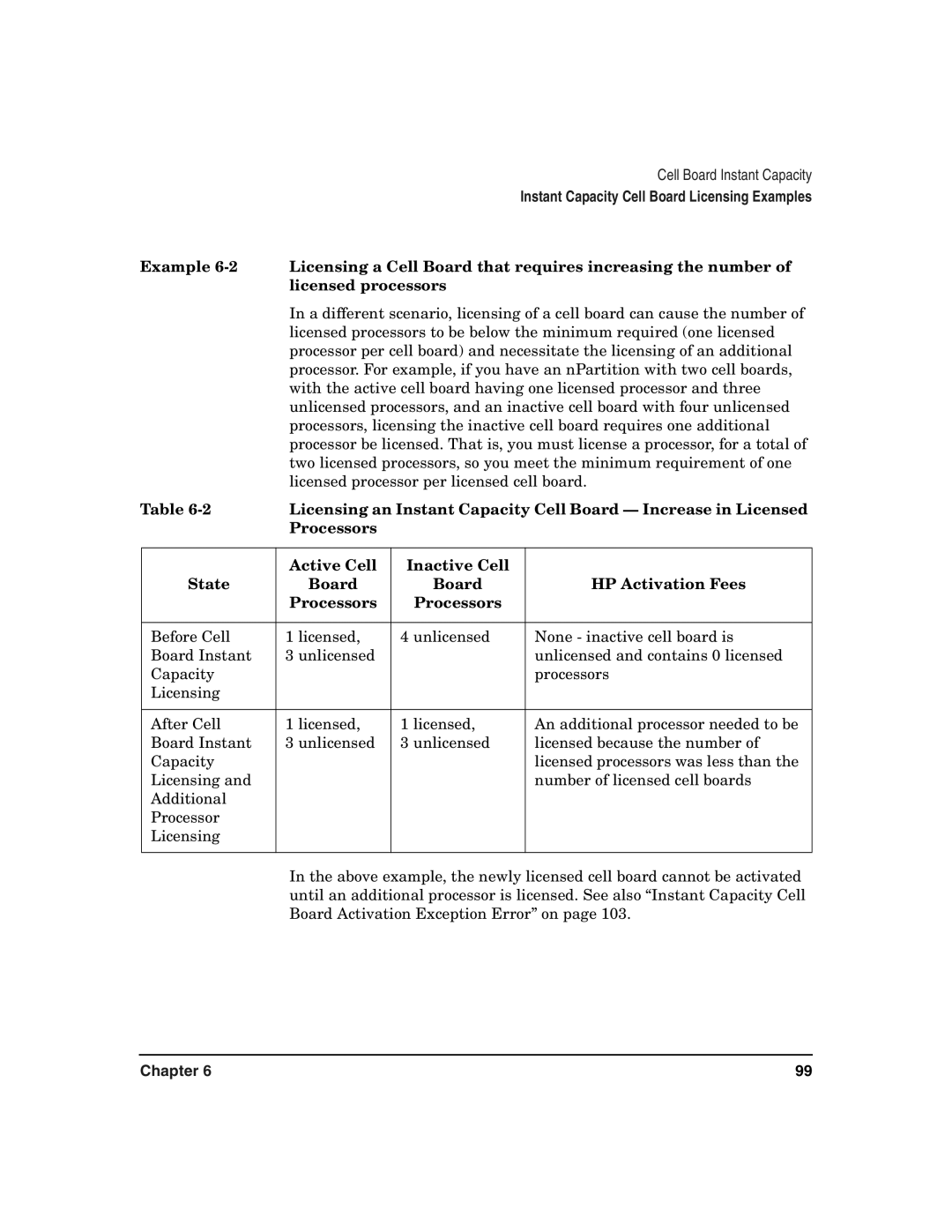Cell Board Instant Capacity
Instant Capacity Cell Board Licensing Examples
Example
In a different scenario, licensing of a cell board can cause the number of licensed processors to be below the minimum required (one licensed processor per cell board) and necessitate the licensing of an additional processor. For example, if you have an nPartition with two cell boards, with the active cell board having one licensed processor and three unlicensed processors, and an inactive cell board with four unlicensed processors, licensing the inactive cell board requires one additional processor be licensed. That is, you must license a processor, for a total of two licensed processors, so you meet the minimum requirement of one licensed processor per licensed cell board.
Table | Licensing an Instant Capacity Cell Board — Increase in Licensed | ||
| Processors |
|
|
|
|
|
|
| Active Cell | Inactive Cell |
|
State | Board | Board | HP Activation Fees |
| Processors | Processors |
|
|
|
|
|
Before Cell | 1 licensed, | 4 unlicensed | None - inactive cell board is |
Board Instant | 3 unlicensed |
| unlicensed and contains 0 licensed |
Capacity |
|
| processors |
Licensing |
|
|
|
|
|
|
|
After Cell | 1 licensed, | 1 licensed, | An additional processor needed to be |
Board Instant | 3 unlicensed | 3 unlicensed | licensed because the number of |
Capacity |
|
| licensed processors was less than the |
Licensing and |
|
| number of licensed cell boards |
Additional |
|
|
|
Processor |
|
|
|
Licensing |
|
|
|
|
|
|
|
In the above example, the newly licensed cell board cannot be activated until an additional processor is licensed. See also “Instant Capacity Cell Board Activation Exception Error” on page 103.
Chapter 6 | 99 |
